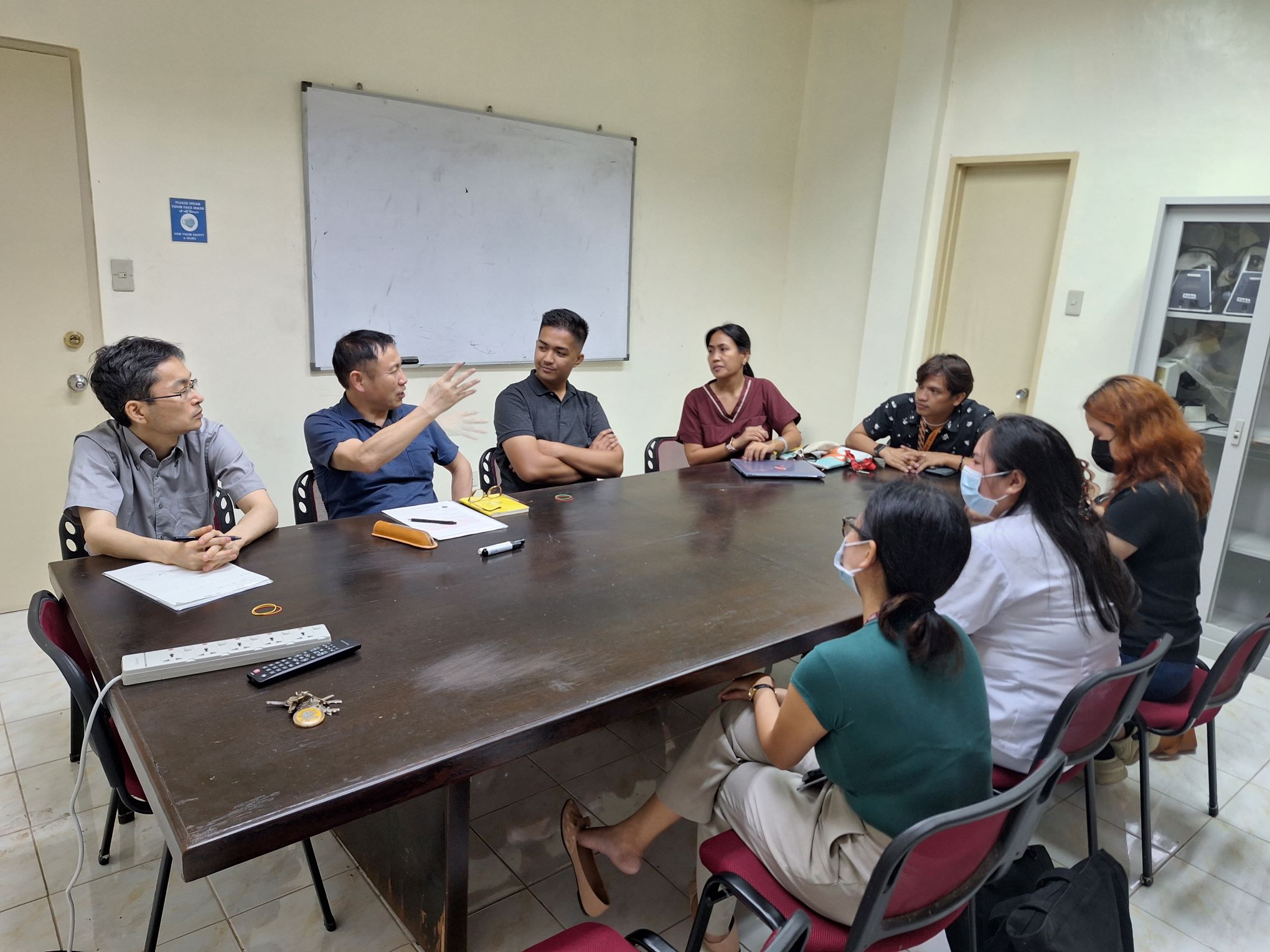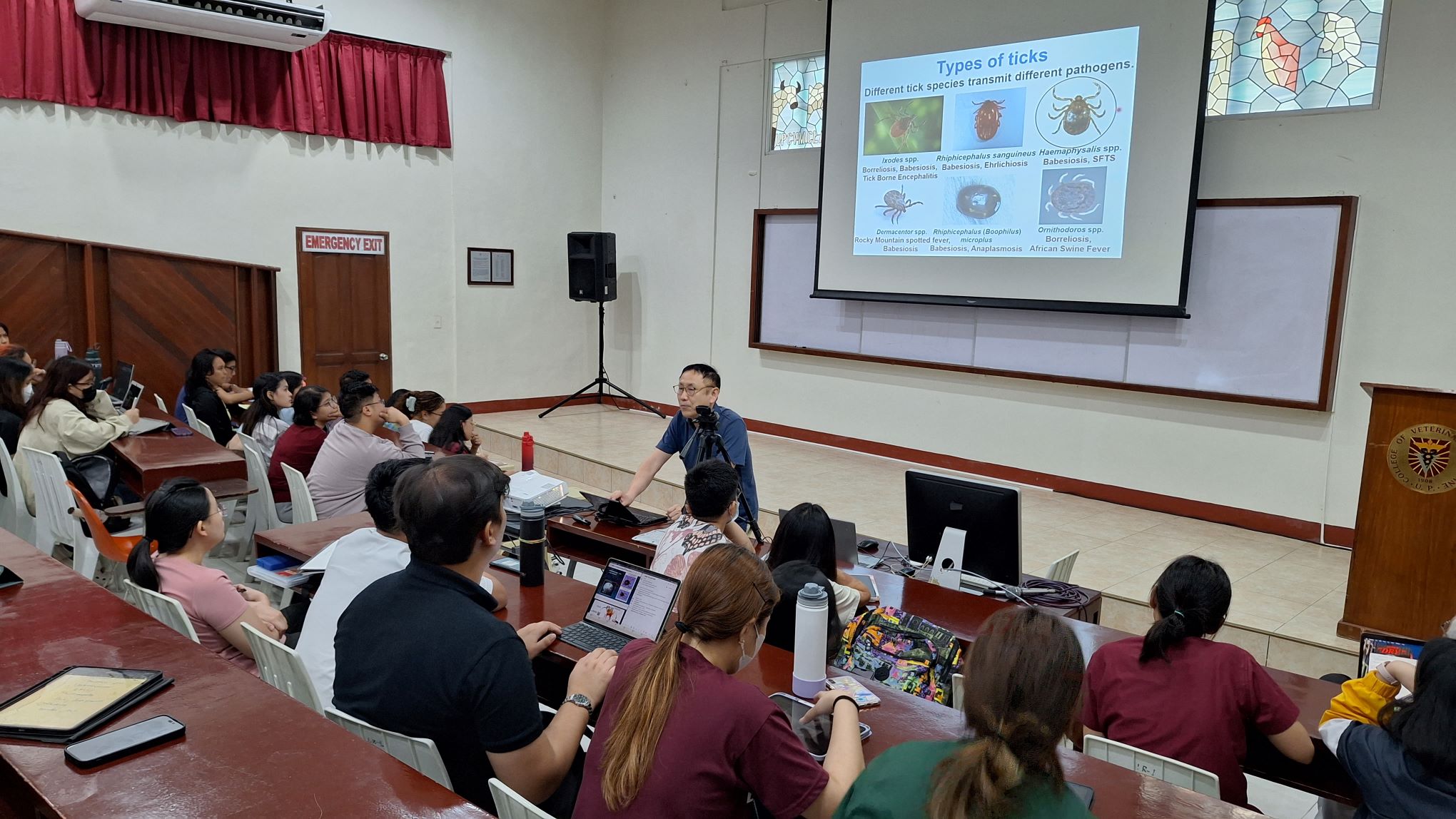Incubation
"Elucidation of the actual situation and establishment of convenient and rapid diagnosis methods for tick-borne infectious diseases in Southeast Asia"
R6-7 1-2 (R6 AY2024)
| Project Leader | Tanaka Tetsuya (Tohoku University Graduate School of Agricultural Science) |
| Collaborators | Yamazaki Wataru (Kyoto University, Center for Southeast Asian Studies) Galay Remil Linggatong (University of the Philippines Los Baños, College of Veterinary Medicine) Talactac Melborune (Rio Cavite State University, College of Veterinary Medicine and Biomedical Science) Duong Duc Hieu (Vietnam National University of Agriculture, Faculty of Veterinary Medicine) Mai Thi Ngan (Vietnam National University of Agriculture, Faculty of Veterinary Medicine) |
| Research Project | Elucidation of the actual situation and establishment of convenient and rapid diagnosis methods for tick-borne infectious diseases in Southeast Asia |
| Countries of Study | Philippines, Vietnam |
Outline of Research
The Philippines and Vietnam have experienced remarkable economic growth in recent years, and exports of agricultural and livestock products to Japan have increased rapidly. However, various infectious diseases in these regions occupy the most important position in preventing the improvement of livestock productivity. In particular, the damage caused by tick-borne infectious diseases is considered particularly serious, and clarification of the actual situation is an urgent and pressing need. This study aims to clarify the prevalence of tick-borne infectious diseases in the Philippines and Vietnam, where trade with Japan is flourishing, and to contribute to strengthening Japan’s import quarantine system and improving and disseminating diagnostic techniques in the Philippines and Vietnam.
Purpose of Research, Its Significance and Expected Results, etc
This study focused on clarifying the prevalence of tick-borne infectious diseases in the Philippines and Vietnam, which are geographically close to Japan. In other words, we planned to investigate the prevalence of tick-borne pathogens such as Anaplasma spp., Babesia spp., and Theileria spp. in cattle and African swine fever virus in pigs in the Philippines and Vietnam by molecular epidemiological methods. In particular, Babesia spp. and the African swine fever virus cause severe and fatal infections in cattle and swine. They are designated domestic animal (legal) infectious diseases and do not exist in Japan. However, once these pathogens enter the country, the potential for widespread spread and invasion is great, and their cleanup is expected to be extremely difficult. Thus, we focused on tick-borne infectious diseases in the Philippines and Vietnam, aiming to elucidate the actual prevalence of these diseases, thereby strengthening Japan’s import quarantine system and improving diagnostic and preventive measures in the Philippines and Vietnam.
To date, epidemiological studies of tick-borne infectious diseases in Southeast Asia have been conducted piecemeal, mainly by researchers in their home countries. Most of these studies have been based on traditional and outdated diagnostic methods, and the results of these studies have rarely been published internationally. Therefore, if the prevalence of tick-borne infectious diseases in the Philippines and Vietnam can be determined through this study, improving livestock productivity in the region and importing safe livestock products from the region to Japan will be essential.


